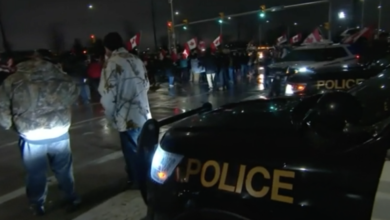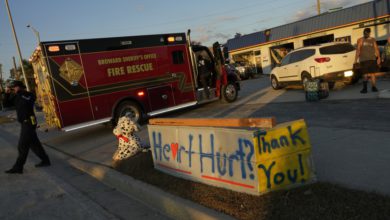
In the two years leading up to the COVID-19 pandemic, Cincinnati saw historically low rates of gun violence, but those gains were reversed in 2020 and shootings remain elevated.
In 2018, the city marked its first year on record with an average of less than one shooting a day. And 2019 followed suit, according to the city's database of shootings that goes back to 2008.
But 2020 brought with it a high number of shootings and a record number of homicides.
Cincinnati police say that by many measures things are starting to return to normal. Homicides, for instance, are far lower than last year.
So far in 2021, there have been 34 killings in the city. By this time last year, there had already been 46. That's a 26% reduction.
On the other hand, there were a record number of shootings last month. It was the worst May on record with more shootings than even last May.
Police officials said their strategy of focusing on violent offenders, which proved successful in 2018 and 2019, remains consistent now. The re-implementation of the gun crimes task force is also taking guns off the street in record numbers.
On June 7, Cincinnati police reported they had recovered 712 guns so far this year compared to 576 during the same period last year.
The city has also partnered with federal prosecutors to charge gun crimes in federal court with the possibility of harsher sentences.
Looking at year-to-date numbers in between 2020 and 2021, the number of shooting have fallen about 10 percent, but still have not returned to pre-pandemic levels.

A 31% increase
Comparing the average number of shootings each month in 2018 and 2019 to the number in 2020 and so far in 2021 shows a 31% increase.
Using the same method for individual neighborhoods, it can be seen that shootings are up in 28 of Cincinnati's 52 neighborhoods. Average monthly shootings have decreased in 17 neighborhoods, and another seven have had no shootings at all in the past four years.
The neighborhoods that saw significant increases are:
- Camp Washington has doubled its number of shootings.
- The three small neighborhoods around the University of Cincinnati – Clifton Heights, Fairview and University Heights – saw an 87% increase.
- West End had an 81% increase.
- Winton Hills had a 70% increase.
- Spring Grove Village and Mount Airy both had increases of more than 60%.
- Westwood has increased over 50%.
- Avondale has increased 41%.
Six neighborhoods have seen significant decreases: English Woods, Carthage, Millvale, West Price Hill, College Hill and East Westwood.
'Reckless abandon'
Gene Ellington is the pastor at Consolation Church in College Hill. He was on the scene of a Saturday quadruple shooting in East Westwood with the "God Squad," a violence intervention group that works to support victim's families, prevent retaliation and reduce gun violence.
"There were two innocent children caught in the crossfire of two other teenagers shooting at each other," Ellington told The Enquirer. "The children didn't choose to be in that conflict, they were just going to the store."
He said the shooters acted with "reckless abandon," not caring who got shot.
As of 4 p.m. Monday, the two juveniles remained in critical condition at Cincinnati Children's Hospital.
Ellington said he believes the pandemic has worsened gun violence, but he believes the shootings speak more to where society is currently headed.
"Violence has become the acceptable norm for conflict," he said.
He said a major factor in this is "the sense of helplessness and hopelessness that exists in all aspects of life in the African American community" due to disparities in employment, education, housing, healthcare and more.
"There is a litany of issues that need to be addressed, and it might seem like its an insurmountable task, but I don't think that it is," Ellington said. "We have to start seeing people as people."
Source link








